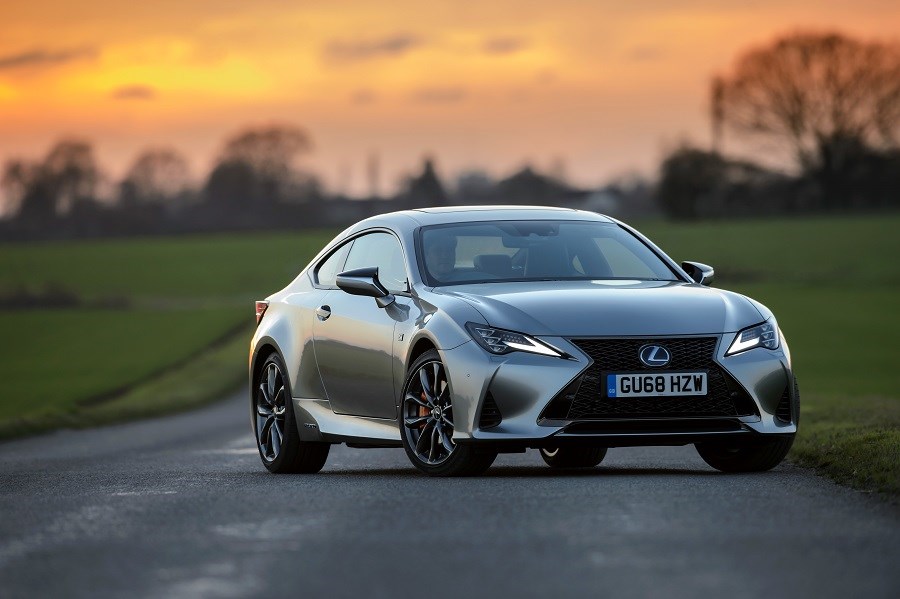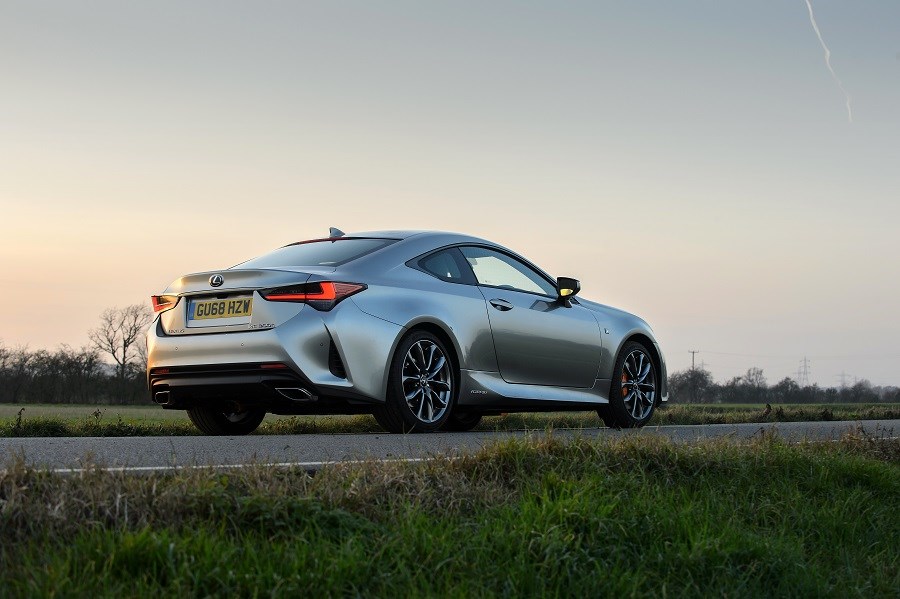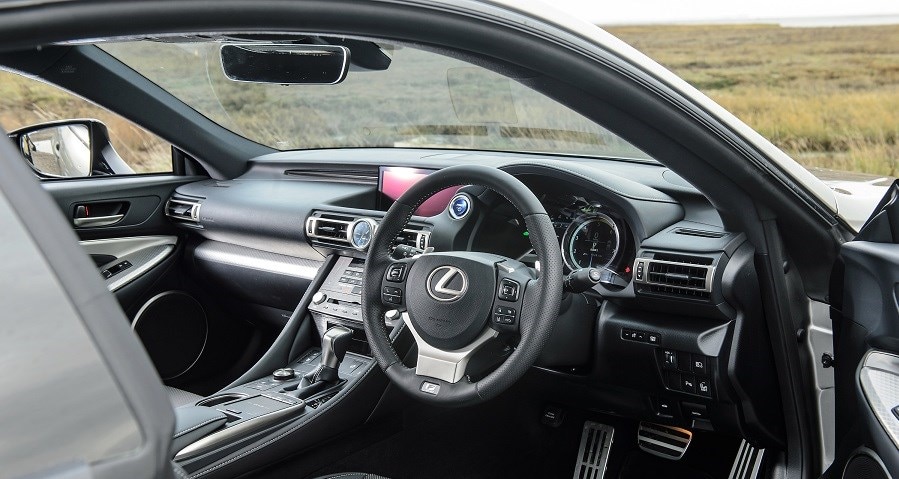Latest model
In 2018, Lexus added its Safety System+ package as standard to all RCs, as well as satellite navigation and a 10.3-inch screen also being offered for no extra cost. A new ‘Premier’ pack was added to the F-Sport grade, which offered luxuries such as a Mark Levinson sound system. A new vibrant Naples Yellow is also now available.
In an unusual move, just a few months after this update, the firm revealed another updated RC. Taking inspiration from the range-topping LC coupe, the new RC benefitted from a new front bumper, a revised grille along with air ducts being integrated into the corners of the model’s front bumper.
Small adjustments were also made to the interior to improve quality, with new materials — such as brushed aluminium — being added to the cabin, as well as a new analogue clock lifted from the more expensive LC. Sales of the revised RC kicked off in November 2018.
Value for money
The range starts from £38,800 and rises to just under £50,000, so Lexus’s smallest coupe is by no means cheap, even when you consider the lengthy list of equipment fitted as standard.
Where the RC makes more sense, though, is on the used market. The premium coupe sector is dominated by rivals from Germany — namely the Audi A5, BMW 4 Series and Mercedes C-Class Coupe — which all hold their value excellently. Lexus doesn’t quite have the same brand appeal as its competitors, and the RC’s prices haven’t held up as well as a result, with used models starting from around £23,000. Nearly-new versions are also an intriguing prospect too, with a one-year-old example typically costing from £32,000, which is a notable saving off list price.
Looks and image
The Lexus is arguably more stylish in terms of design than its German rivals, although some might not be a fan of imposing details such as the huge ‘spindle’ front grille. We personally think it looks great, and adds a level of class to the Lexus, while a rakish design, sharp-looking front and rear lights and large alloy wheels all give the RC fantastic road presence. The latest model’s bid to look like a baby version of Lexus’s range-topping LC coupe has also paid off.
The interior is also as you expect from a modern Lexus — stylish and well-built. The RC300h is headed up by a large 10.3-inch screen which hosts a range of connected services and satellite navigation, while plush materials are used throughout. It’s a shame that leather upholstery isn’t included as standard, although the Tahara seats feel nearly as premium. Our only real gripe is with the touchpad, which is used to operate the main screen. It’s far too fiddly to use and is some distance off being as intuitive as the systems fitted to Audis and BMWs.
The main disappointment with the RC300h, however, is the way it drives. We would forgive Lexus if it marketed the coupe as being comfortable, rather than ‘dynamic’, but it doesn’t, which is why the model is a bit underwhelming. Its 220bhp powertrain might sound plenty, but it equates to not particularly spirited performance thanks to the RC300h’s high kerbweight. The CVT gearbox is also a poor match for the RC, as it dulls performance further and feels unrefined under heavy acceleration. On the plus side, it’s a comfortable cruiser and delivers a supple ride, which results in stress-free long journeys.




